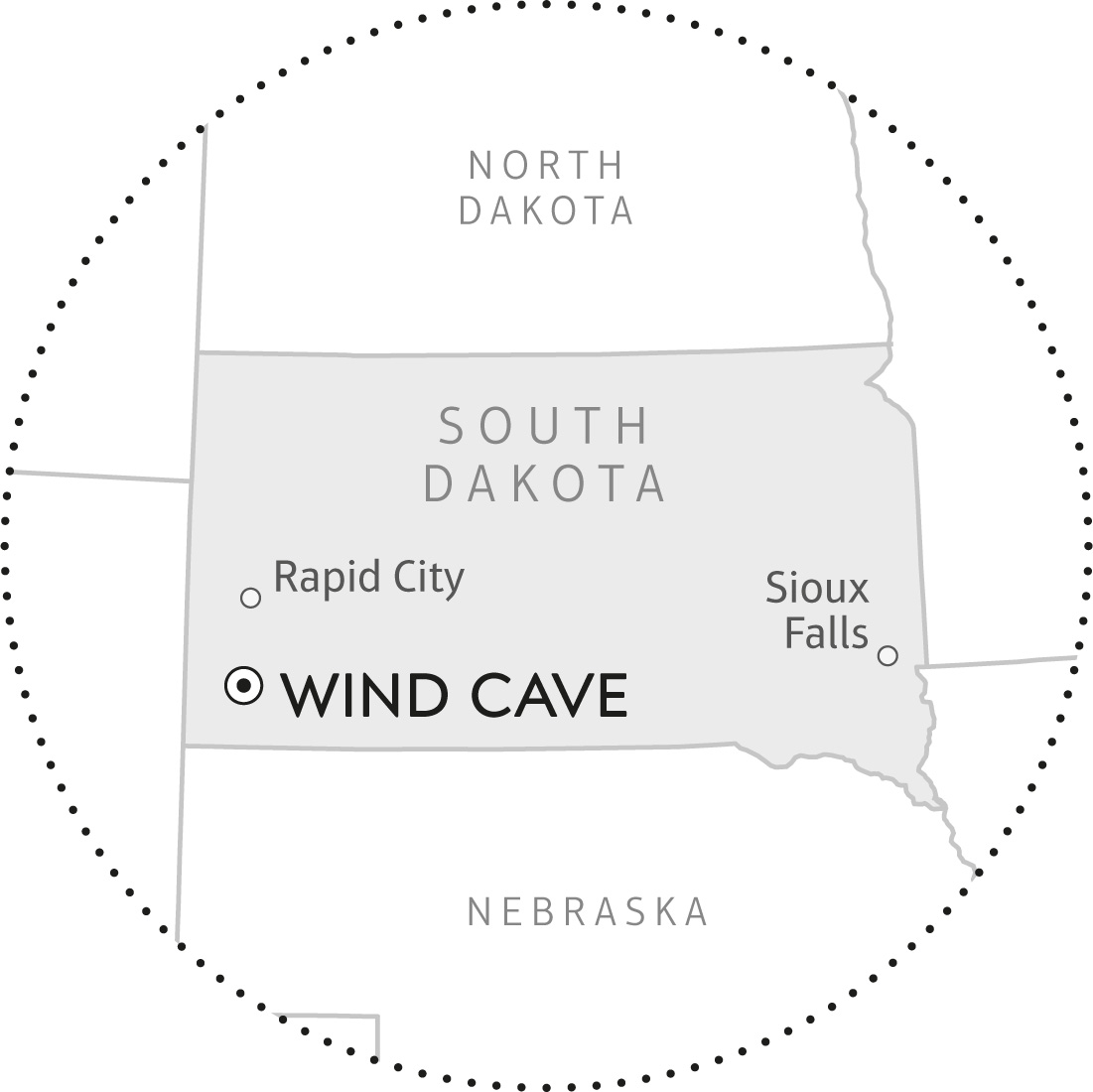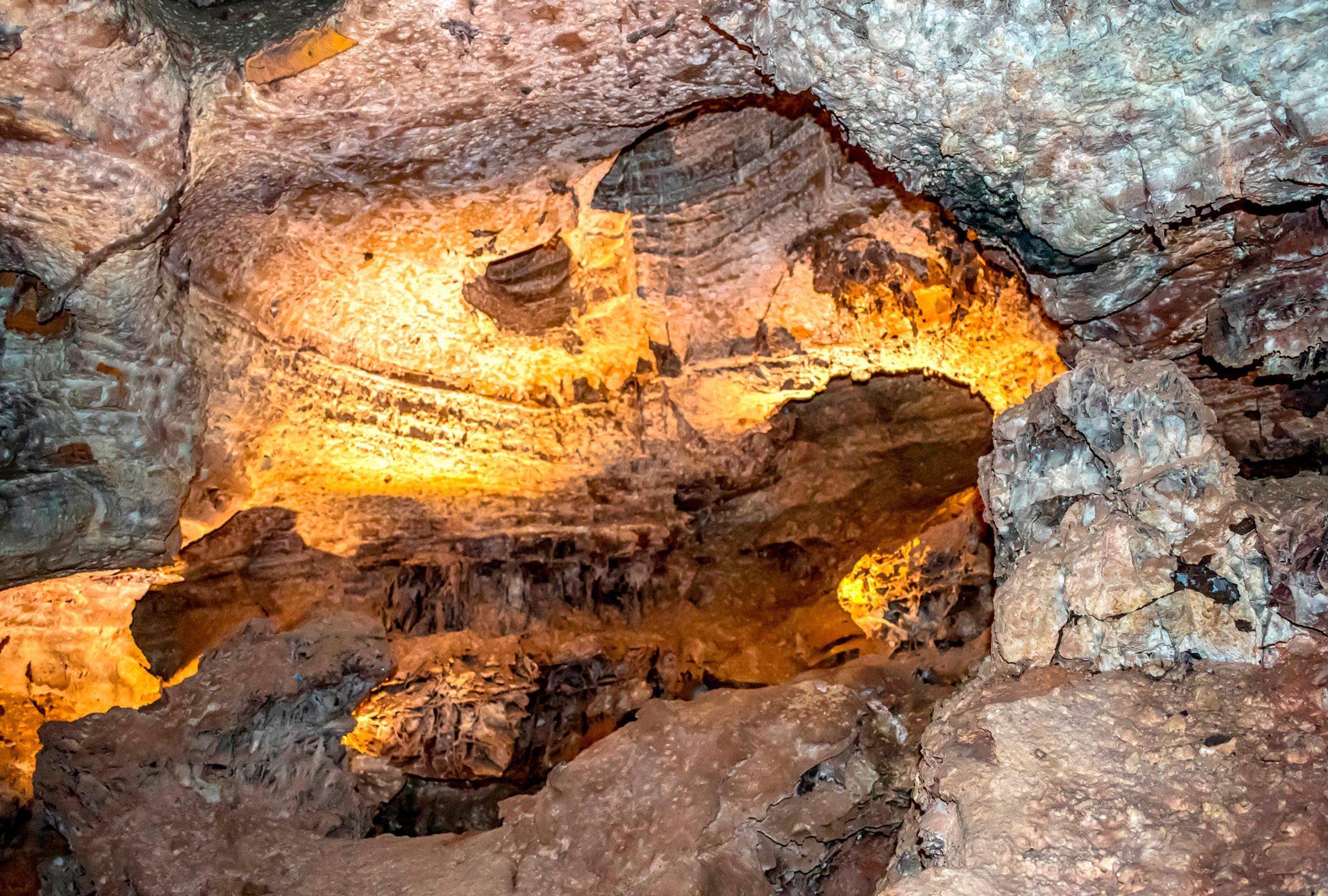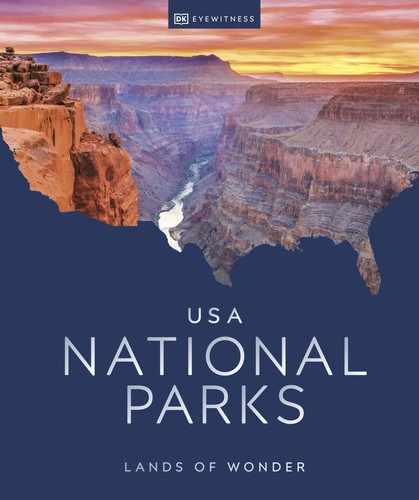
South Dakota
WIND CAVE
ESTABLISHED 1903
From deep inside the earth, a hissing wind blows, traveling the length of one of the world’s longest cave systems before bursting onto the bright, grassy plains of the Black Hills.
It’s unclear what force first drew the indigenous peoples of the area to the dark passageways and whistling winds of Wind Cave, but the cave was discovered long ago by the Lakota. Wind Cave is central to their emergence narrative, which explains how humans came to be. The complicated tale is filled with trickery, love, and hardship and tells how people were taken up from the underworld and taught to hunt and survive in the land above.

The sweeping landscape above Wind Cave provides perfect photograph material
FOCUS ON
A Culture of Stories
The oral tradition of storytelling is strong in American Indian culture, and is how community history and legend have historically been shared. One such story of the Oglala Lakota tells of Wind Cave, a sacred place. In the Lakota language, “Oniya Oshoka” refers to an area where the planet “breathes inside,” transferring wisdom through a passageway between worlds.
Wonders that lie beneath
Wind Cave only became known to the wider world in 1881, when two brothers, Tom and Jesse Bingham, stumbled upon the cave’s entrance after following the direction of a loud whooshing sound. Today, 140 miles (225 km) of labyrinthine corridors have been mapped, revealing unique geological wonders, such as needlelike growths known as frostwork, knobby “popcorn” calcite structures, and—webbed across the cave’s ceilings—the world’s largest and perhaps finest example of boxwork formations.
5
Percentage of the cave that has been mapped.
95
Large percentage of the world’s boxwork formations found at Wind Cave.
300
Age of the cave in millions of years—it is among the oldest on Earth.
What lies above
Above ground, the Black Hills are home to the abundant prairie wildlife that made the Dakota Territory an especially popular hunting ground in the late 1800s. Prairie falcons and other birds, pronghorn antelopes, coyotes, prairie dogs, and the iconic American bison are all here in huge numbers. Driving along US Highway 385 and South Dakota Highway 87, it is virtually impossible not to spot wildlife.
The plains are also famous for changing weather, with afternoon storms serving up color-rich skies that stretch above swaying grasslands. In spring, fields of wildflowers add an even more vibrant color pop to the above-ground world of Wind Cave—a world that in terms of “wow factor” holds its own with its subterranean counterpart.

The dry climate of the cave is perfect for the formation of the calcite-rich, honeycomblike boxwork
If you have…
An hour Take a self-guided wildlife drive on Highway 385.

A day ▷ Explore Wind Cave on a ranger-guided tour. Excursions vary in length, and are moderate to strenuous.
